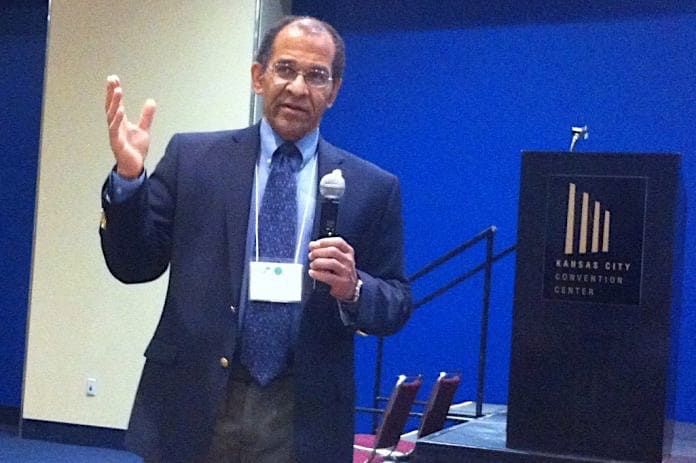On Monday Christopher A. Hart, the acting chairman of the National Transportation Safety Board (NTSB), discussed “To Belt or Not to Belt: That is the Question” at the NAPT Summit and NASDPTS Annual Meeting in Kansas City, Missouri. He also touched on the dangers of distracted driving and sleep apnea among school bus drivers.
Hart spent most of the separate sessions tackling the seat-belt issue, which remains controversial among student transportation professionals who have long held that school bus compartmentalization is the foundation of occupant safety. This assertion has been upheld by the National Highway and Traffic Safety Administration, which mandates seat belts only on the smaller Type A school buses typically used to transport preschool and special needs students.
Hart said the NTSB strongly believes seat belts are a “big improvement” from compartmentalization because most crash impacts occur at the front or rear of school buses. He explained that the board is pushing for lap/shoulder belts specifically because of their findings after investigating fatal school bus crashes in Chesterfield, New Jersey and Port St. Lucie, Florida that occurred in 2012.
“Our mission is to look at safety only. We don’t do quantitative economic studies, but we do keep the economic reality in mind,” Hart stressed.
He showed an animation of the Florida and New Jersey school bus crashes, as he did last year, and pointed to the lack of proper seatbelt usage and seating integrity as contributing factors in the resulting student deaths.
Hart stressed that video footage of the accident in New Jersey showed that three-point seat belts provide “much better” occupant protection than lap belts alone. In this crash, the one fatality involved an unbelted passenger in the rear, whereas a passenger across the aisle who was properly belted survived. There were two significant side impacts, first by the truck itself and second, when the bus rotated and smashed against a light pole, according to the NTSB. In addition, the truck that collided with the Chesterfield bus had faulty brakes and was speeding as well as “overweight,” noted Hart.
He shared the following NHTSA statistics on traffic crashes involving school buses: 49 percent of fatalities resulted from frontal impacts, 24 percent from side impacts, 9 percent from rear impacts and 18 percent from “other” impacts.
Hart added that this is breakdown is still “too loose” and NTSB would like better data on bus accidents, including the frequency of longitudinal versus rollover or side-impact collisions. He also addressed incidences of immersion when a school bus is underwater after a crash — a key concern of seat-belt opponents — and he called such cases “rare.”
“There are very few cases. Most of the non-longitudinal crashes are side impact,” he reiterated.
Hart went on to address NHTSA’s argument that three-point belts are more expensive and posing the following questions:
- How much would it really cost bus OEMs to include them?
- How would that affect school districts’ bus purchases?
- Would the additional cost result in fewer buses?
- Might this answer be different for some than for others?
Hart called on the industry to come up with realistic data that is based on logic and not passion. Then the acting chair briefly addressed the widespread challenges of drivers either falling asleep at the wheel or texting while driving. He noted that texting increases traffic crashes by a factor of 23 according to NHTSA.
“There is still too high of a percentage of people who do it. We need standards on vehicles to prohibit texting while driving. It is a huge challenge, similar to what we used to have with drunk driving,” he said.


















